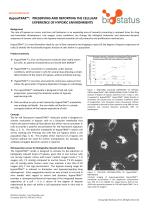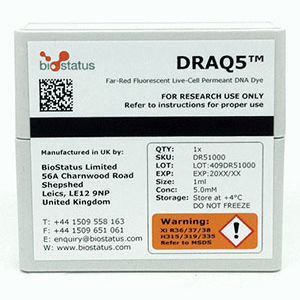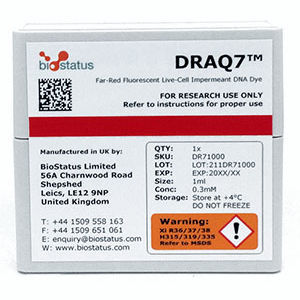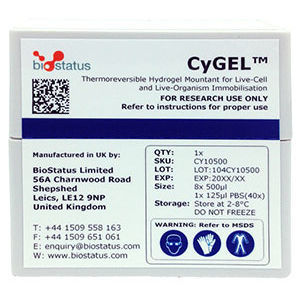
Dye reagent HypoxiTRAK™for researchfor flow cytometrycell imaging
Add to favorites
Compare this product
fo_shop_gate_exact_title
Characteristics
- Type
- dye
- Applications
- for research, for flow cytometry, cell imaging, for immunofluorescence
- Storage temperature
Max.: 8 °C
(46 °F)Min.: 2 °C
(36 °F)
Description
HypoxiTRAK™ is a novel, far-red fluorescing dye that reveals the hypoxic experience of individual cells. It is non-toxic to normoxic cells. HypoxiTRAK™ enables entirely new assay approaches to functional hypoxia.
HypoxiTRAK™ can be used in flow cytometry and fluorescence imaging and is spectrally compatible with common visible range fluors including FITC and R-PE.
HypoxiTRAK™ is a member of the anthraquinone family and shares spectral characteristics with the related cell permeant DNA dye DRAQ5™.
HypoxiTRAK™ is designed to activate by bioreduction at biologically relevant levels of hypoxic environments (e.g. tumour cores) compared to normal tissues.
The bioactive metabolite accumulates in cells, proportional to the hypoxia experienced, providing a persistent far-red fluorescent signature and induces cell arrest thereby marking and ‘freezing’ hypoxic cells, enabling a direct read-out of an hypoxic cell fraction.
Why HypoxiTRAK™?
The hypoxia sensing range for HypoxiTRAK™ is relevant to biomarker and hypoxia-targeting drug development:
HypoxiTRAK™ is ideal for studies over several days.
HypoxiTRAK™ read-out is direct with no requirement for cell processing.
As no fixation is required, HypoxiTRAK™ can provide a convenient negative selection for cells not experiencing significant hypoxia within heterogeneous populations, including 3D culture.
HypoxiTRAK™ shows low perturbation in the absence of bioactivation while the unique far-red fluorescence signature offers compatibility with other end-point assays for hypoxia that use fluorescence signatures.
Related Searches
- Solution reagent kit
- Molecular biology reagent kit
- Research reagent kit
- Histology reagent kit
- Dye reagent
- Immunology reagent
- Cytology reagent kit
- Staining solution reagent kit
- Hematology reagent kit
- Immunofluorescence reagent kit
- Flow cytometry reagent kit
- DNA analysis reagent kit
- Apoptosis reagent kit
- Blood phenotyping reagent kit
- Cell imaging reagent
- Hydrogel reagent
*Prices are pre-tax. They exclude delivery charges and customs duties and do not include additional charges for installation or activation options. Prices are indicative only and may vary by country, with changes to the cost of raw materials and exchange rates.












